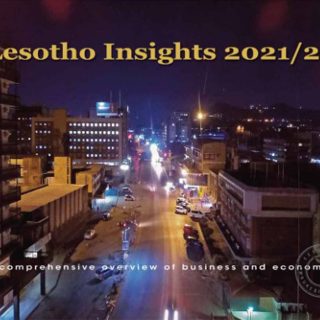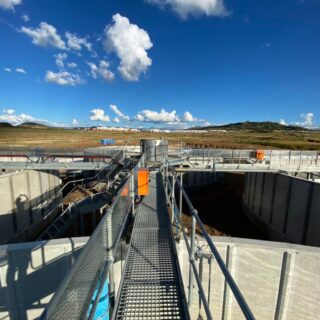The Current State of the Tourism Sector and Prospects for Development

Lesotho’s tourism sector is one of the most untapped industries of the country despite the vast high rising mountain ranges and adorable plateaus, steep gorges and valleys. These are home to some of the endangered bird species as well as crystal clear waterways that mingle the basalt and sandstones hills that form the picturesque formations of some of the oldest land forms of the world.
Lesotho boasts a wide range of tourism attractions from mountain hiking, pony trekking, climbing, and many other adrenalin pumping activities such as water sports with white water rafting along the dangerous downstream descents, mountain biking, off-road motor and biking experiences as well as 4×4 trails which have recently gained popularity amongst those who want to test their driving abilities and vehicular horse-power. Most of all, Lesotho also offers several rare opportunities to its visitors such as snow in winter, archaeological sites that share the mysteries of the past, from the dinosaur era and beyond and historical sites that tells the stories of the evolution of modern-day society and the making of the Southern African nations…
The sector, though not so well developed in terms of infrastructure and visibility on the international market space, is slowly catching up. Had it not been for the Covid-19-induced setbacks in the past two years– a lot of initiatives that were already taking shape would have materialised.
Investors coming into Lesotho’s tourism industry would be happy to learn that the Lesotho Tourism Development Corporation (LTDC) has crafted a new strategy that will make it much easier and more lucrative for them to set up businesses in the country.
Among the new measures is the drafting of Vision 2030, a new strategic policy document that is expected to bring significant improvements to how tourism sector operates. Some of the new measures include the establishment of a tourism levy, a new branding and marketing approach, more emphasis on sustainable tourism and a raft of other measures.
Tourism in Lesotho is expected to bounce back to sustainability levels that were experienced during the pre-Covid days, various players in the industry say. Like most countries around the world, Lesotho’s tourism industry was hard hit by the outbreak of the global pandemic between January 2020 and early 2022 and it is only recently that the sector has been showing signs of recovery – thanks to a moderate increase in international arrivals and a boost in domestic tourism.
Lesotho’s most popular holiday resorts include Bokong Nature Reserve in Leribe, Sehlabathebe National Park in Qacha’s Nek and Tšehlanyane National Park in Leribe, under which the five-star Maliba Lodge is housed and the Kome Caves Dwelling in Berea.
The Lesotho Highlands Water Authority-managed Katse Dam in Thaba Tseka and Mohale Dam in Maseru district form part of the gigantic water reservoirs that have brought huge opportunities for water activity tourism in Lesotho. The spectacular 192-metre Maletsunyane Waterfall, one of Africa’s tallest in Semonkong, Maseru district, adds to the water features of Lesotho’s tourism sites.
Quthing district is known for its dinosaur footprints and the Masitise Cave House, a unique dwelling built by a French missionary in 1866. The Mount Moorosi range, that overlooks Senqu (Orange) River, also in Quthing, makes a perfect spot for hikers and nature lovers alike.
Afriski Mountain Lodge and Resort at Ox Bow in Butha-Buthe is regarded as the highest of Southern Africa’s only two ski resorts (the other is Tiffindell Ski Resort in South Africa). It offers skiing during midwinter (June to August) and activities such as mountain biking and hiking at other times.
The other popular tourism destination is the Sani Top resort at Sani Pass on the Lesotho-South African border atop the Thabana Ntlenyana mountain range. Perched at 2 874 metres, Sani Top offers wonderful hiking opportunities and is the setting for Africa’s highest pub found on the Lesotho side.
Apart from the main tourism sites, places such as Thaba Bosiu just about 40 km out of Maseru city, offers historical tourism facilities at the founder of the Basotho nation, King Moshoeshoe I’s grave as well as the adjacent Thaba Bosiu Cultural Village that offers conference and accommodation facilities.
Lesotho’s capital, Maseru, is surrounded by some of the country’s best selection of hotels, restaurants and other leisure places and so are other major towns in the country’s 10 districts. In a nutshell, there is something for the discerning tourist in every city, town or district of Lesotho.
Before the advent of Covid-19, Lesotho had recorded more than 1.1 million visitors in 2019 and most of them had come from the neighbouring South Africa and other parts of Africa, Europe, Asia and the United States. When Covid hit, the borders and inbound travel routes were closed down and so were the tourism facilities in the country, leading to loss of jobs and revenue for the industry.
Now the LTDC is working with the Ministry of Environment, Tourism and Culture, and other partners in quasi-government and the private sector to revive the industry.
In 2019, the LTDC produced an annual Tourism Satellite Account (TSA) – a detailed overview of the trends in tourism for the year prior and projections for the year ahead – with support from Statistics South Africa. The TSA is a barometer for analysing tourism trends in any country in the world and Lesotho was privileged to have produced the ‘Annual Arrivals and Accommodation Report 2019’ for this purpose.
However, the LTDC is currently not in a position to produce a TSA anytime soon due to limited funds since it requires a variety of information inputs, some of which require resources to undertake specific industry surveys. The LDTC would be sharing its vision and projections as part of its Vision 2030 document coming soon.
In the ‘Annual Arrivals and Accommodation Report 2019’, the LNDC has indicated that tourism has been adopted as a one of the sectors that would foster acceleration of economic growth and development under the National Strategic Development Plan (NSDP I & II).
According to the report, Lesotho welcomed 1 142 381 visitors in 2019 representing a slight decline of -2.6 percent compared to the previous year when there were a total of 1 172 648 inbound travellers. Although there was a decline, the report says, visitor arrivals during the year had been encouraging.
After witnessing drops in the first and last quarter of the year, figures still denote that Lesotho enjoyed a consistent growth of visitor arrivals where there was a concentrated peak in March (92 941), April (98 025) and June (93 176) respectively. Moreover, during the same year some slight increases in visitor arrivals from all continents except for Africa were also observed.
By analysing rankings of Lesotho’s source markets in 2019, the report noted that South Africa remained Lesotho’s main source market accounting for 88.4% percent of the total arrivals. This translates to 1 009 982 arrivals.
Visitors from Zimbabwe came second to South Africa with 20 407 recorded during the year while USA claimed third place (9 239) and outperformed Germany (8 957) and Netherlands (8 177).
In terms of accommodation statistics, the report notes that while the number of operational establishments decreased slightly (by seven establishments), the occupancy rate increased slightly, up (by 0.2%) to 20%.
Despite showing early signs of decline, the industry continued to create jobs and fostered economic growth; the subsector directly employed 2 371 people in 2019, which was a decrease of -15% against the previous year (2 717).
The report projected that Lesotho was poised for more growth beyond 2019 in terms of the tourist arrivals, accommodation and employment statistics in the sector had it not been for the outbreak of the pandemic.
It also demonstrated that due to Lesotho’s heavy reliance on South Africa for visitors, a marked decrease in arrivals from the neighbouring country led to a significant decline in the year under review.
While employment also declined marginally in the accommodation sub-sector, figures released show that tourism still contributed positively towards the economy by employing local people. A huge improvement was also seen where most the employees were now skilled versus unskilled labour and of these 58% were female while 42% were male.
The report notes that accommodation establishments recorded revenues of M414 million in the year under review, which was a slight decline compared to the previous year. The major drivers for revenues for accommodation in 2019 were hotels, lodges, guest houses and bed and breakfast establishments.
LTDC attributes the decline in accommodation revenues to the probability to reports of an imminent global disease that was beginning to spread across the world towards the end of the year as Covid-19 was beginning to affect visitors from South Africa, its major source market.
Other players in the sector agree that tourism is on a rebound after the two-year debacle when the industry and all other economic clusters in Lesotho were fighting the effects of the pandemic.
One such an initiative was the re-establishment of the Lesotho Council for Tourism (LCT) on 17 March 2022 when representatives of 13 tourism and hospitality associations gathered in Maseru to formalise the LCT as a body that will contribute to the growth of the industry, under the auspices of the Ministry of Tourism and the LTDC.
The organisations under the banner of the LCT include tour operators and guides associations; hotels and hospitality establishments; parks and wildlife association; catering and liquor services providers; event management companies, chefs’ associations; hiking clubs, travel agents and other outdoor activities’ players.
The re-establishment of the LCT was a show of confidence by the LTDC in local tourism industry practitioners to the growth of the industry. The previous council, which lay dormant since its establishment in 2009 was due to lack of funding and commitment from its members as well as the government and LTDC. The new LCT has now set itself towards the capacitation and skills development of local players in the industry. This intervention is crucial to enable sector players to offer value-for-money services to tourists from Lesotho and other countries.
The Lesotho Tour Operators Association has also welcomed the re-establishment of the LCT saying the existence of such a body was long overdue. Tour operators have expresses hope that once capacitated, players in the sector would contribute meaningfully to the country’s GDP as much as their counterparts in South Africa, Kenya, Uganda and elsewhere in the world.
Local tour operators have also found a niche market within the domestic tourism sector that has seen a marked increase in the number of Basotho opting for domestic tourism towards the end of 2021 and into the festive season. The rise in domestic tourism is attributable to Covid 19 restrictions, which pushed both local demand and supply upon realising that local establishments had to rely on the local market for sustenance due to restrictions on the international travel. Similarly, Basotho holidaymakers responded positively and provided them more opportunities to appreciate the beauty of their country.
The promotion of domestic tourism is best exemplified, by Costa Rica in South America that moved all its holidays in 2020 and 2021 to Mondays to enable Costa Ricans to enjoy long weekends while they travelled domestically as one of the ways through which government could incentivise tourism, local tour operators have advised the government and other responsible authorities to be more proactive towards the sector by adopting such measures.
Lesotho has several tour operators who provide tour services for groups, families or individuals who wish to travel to any leisure facility around the country. They offers day or weekend excursions depending on budget and various tour packages on offer. Some are also organising trips for Basotho going out of Lesotho to other destinations such as Durban and Cape Town in South Africa, as well as Botswana and Namibia, which also gives them more exposure on how tourism operates in other countries.







